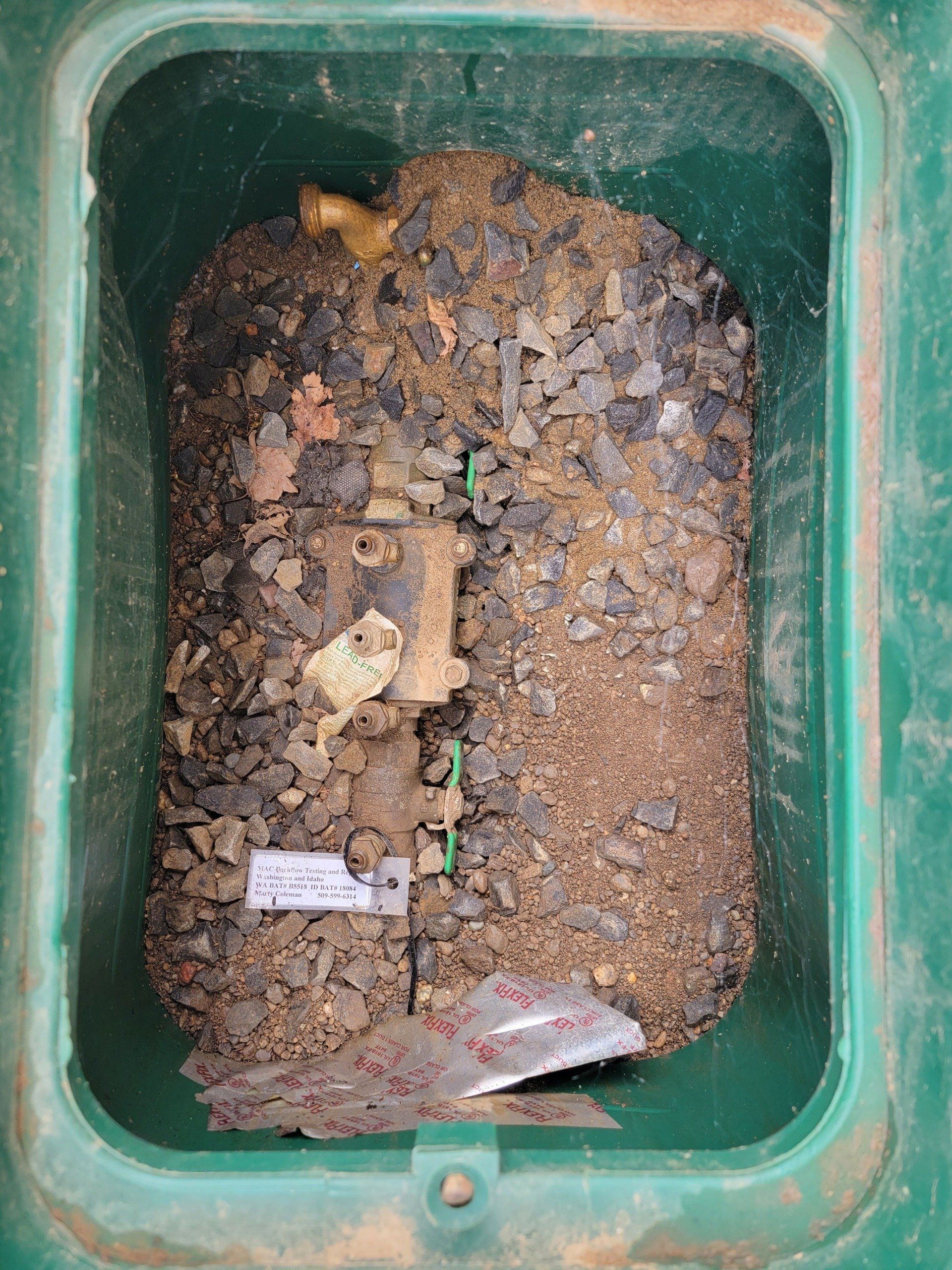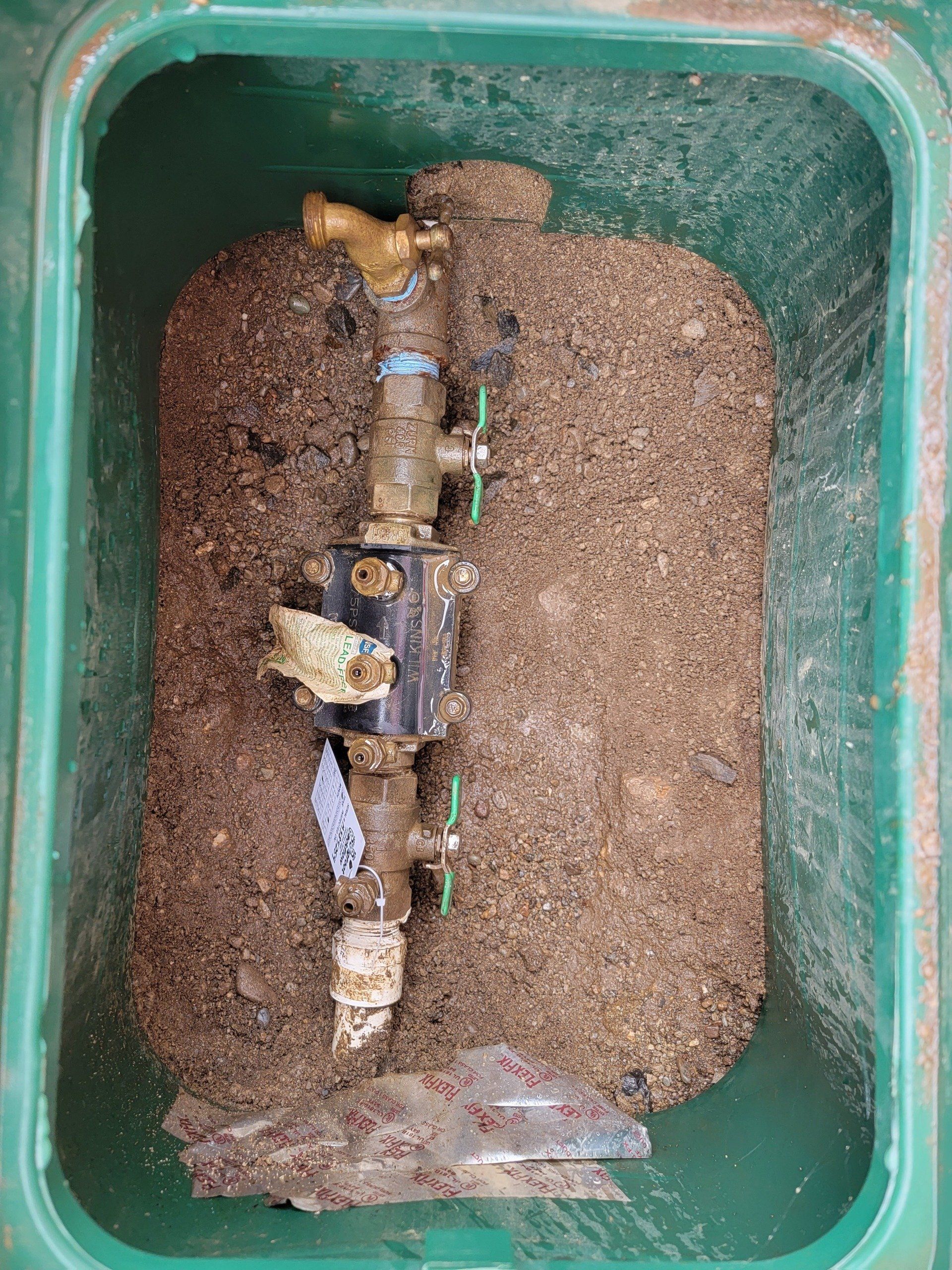Services We Provide
Residential
- Testing
- Repairs
- Replacement
- Installation of residential backflow assemblies
Idaho and Commercial services coming soon!
Request a backflow test or other service:
Contact Us
We will get back to you as soon as possible.
Please try again later.
Backflow Valve Assembly (before & after)


Resource
This link will direct you to a helpful website at the Washington State Department of Health, which also has links to laws, rules, and regulations:
Backflow Prevention Frequently Asked Questions
Every water system has cross connections. Plumbing codes and State drinking water regulations require cross connections to be controlled by approved methods (physical air gap) or approved mechanical backflow prevention devices or assemblies. The various types of mechanical backflow preventers include: reduced pressure backflow assembly (RPBA), reduced pressure detector assembly (RPDA), double check valve assembly (DCVA), double check detector assembly (DCDA), pressure vacuum breaker assembly (PVBA), spill resistant vacuum breaker assembly (SVBA) and atmospheric vacuum breaker (AVB). For a backflow preventer to provide proper protection, it must be approved for backflow protection, designed for the degree of hazard and backflow it is controlling, installed correctly, tested annually by a State certified tester, and repaired as necessary.
The ordinary garden hose is used to create the most common form of cross-connection. A hose can be easily connected to the drinking water supply and used for a variety of potentially dangerous applications. An example would be a garden hose attached to a service sink with the end of the hose submerged in a tub full of detergent. Another example would be a garden hose attached to a faucet and the other end lying in a swimming pool. Another example would be a garden hose attached to a faucet and the other end attached to fertilizer/pesticide sprayer.
Backflow preventers will be required if an actual or potential hazard for a cross-connection exists. A few examples of hazards include:
- Commercial and Residential Irrigation Systems
- Fire Sprinkler Systems
- Medical Facilities
- Processing Plants
The water company will determine which type of protection is required based on the degree of hazard that the property represents to the drinking water supply.
A backflow issue exists if a lawn irrigation backflow assembly malfunctions (or is not installed) and when the water pressure drops, it creates a vacuum that sucks some water from the irrigation system, which may be contaminated, into the water supply. These circumstances may occur when a water main breaks or a possibly a fire hydrant is opened. Another situation is when a sprinkler system is creating backpressure greater than the service pressure due to elevation differences.
An example of this situation includes customers observe yellow water flowing from a drinking fountain and green ice rolling out of an ice machine. The contaminants were traced to an error by a maintenance person. A pump for the air conditioning system burned out and the maintenance person, unaware of the danger, connected the system to another pump used for potable water. The result caused large doses of bichromate of soda to be forced into the drinking water supply, causing the dramatic appearance of yellow water and colored ice cubes.
Soft drink dispensers (post-mix carbonators) use carbonated water mixed under pressure with syrup and water to provide soft drink beverages. Many, if not most internal water pipes, are made of copper. When carbonated water comes into contact with copper, it chemically dissolves the copper from the pipe. This copper-carbonate solution has been proven to be a risk to the digestive system.
There is no “grandfathering” of backflow assemblies or devices which are out of compliance with current regulations or not currently installed. The State considers backflow regulations to be a health and safety issue. These issues must be addressed in a timely matter for the safety of the public water supply and the health of our customers.
The EPA enforces the backflow regulations by delegating the responsibility to the State. The Washington State Department of Health/Office of Drinking Water then enforces the backflow regulations by requiring the water purveyors to administer the backflow program locally. Your water company must report to the State annually to determine it is administering the program according to regulations.
It is the responsibility of the customer to ensure that the backflow prevention assembly is always in proper operating condition. Some water companies will send notices to customers reminding them when a test is due.
Backflow assemblies are required to be tested upon installation of the device and annually thereafter. Any time an assembly is worked on or repaired it must also be retested. Some local water districts designate specific due dates for your annual backflow testing. Be sure to check with your local water district for the date.
Backflow assemblies are mechanical devices with working internal pieces. A piece of debris or the calcification of water can cause the assembly to stop working.


